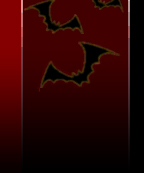|
Castlevania: Aria of Sorrow (2003)

As of recent, the sequels on the Gameboy Advance have irked me quite a bit. Golden Sun, Megaman Battle Network, Advance Wars - they reuse the same engine, graphics and music, and package it as a completely new game. This, as one might imagine, is irksome.
And then there's Igarashi and his Castlevania teams, who apparently never sleep and must be fueled by a source so evil, we dare not speak its name. But it's all good, for this has managed to be the third Castlevania game in the two years the GBA has been available, and in breaking current trends, actually manages to create a different and extremely enjoyable game.
Aria of Sorrow takes place in the year 2035, though you wouldn't know it - the place looks the same as it ever was. However, this is rather important to the story. Dracula rose in the year 1999, as predicted, only to be sealed inside the moon. The hero this time is Soma Cruz, bishouneny high school student that, in grand Castlevania tradition, will continue to threaten the heterosexuality of male fans everywhere. One night, Mr. Cruz and gal pal Mina Hakuba fall unconscious and wake up inside Castlevania. Their objective is merely to get out alive, but maybe also stumble across the reason why they have been summoned to the ancient castle, which is undoubtedly a horrible secret of some kind.
There's also a much larger assortment of characters, including Yoko Belnades, an apparent descendent of Sypha who's investigating the castle; Graham Jones, the leader of an evil cult; Genya Arikado, mysterious dark haired businessman, and Hammer, an armyman who becomes the merchant of the game. Just in this initial concept, this plot beats out the tired "evil friend under Dracula's influence" storyline of the last three games.
Much like Alucard, Soma uses a variety of weapons that can be found scattered around the castle, ranging from knives, swords, morning stars and guns. However, the true innovation is the "Tactical Soul System", keeping with the Japanese tradition of giving goofy names to weapon systems. When you defeat an enemy, there is a chance that Soma will collect its soul and gain access to its abilities. Some of these souls merely increase your stats - others give you interesting powers (the Peeping Eye, for example, will point out hidden passages.) The most interesting of these are the attacks. Ever want to toss bones like a skeleton, spit water like the merman, or unleash hordes upon hordes of Fleaman to do your bidding? You can now.
Graphically the game looks similar to Harmony of Dissonance, though the color palette is a bit darker. The music, however, has drastically improved. The synth quality is much closer to the regular GBA game, and there's some very high quality songs as well - the opening corridor tune is just as good as any Castlevania main theme, and the clock tower song is a suitably SNES-style rocking successor to The Tragic Prince from Symphony of the Night (let's hope an arrange album will include this song with full guitars.) The sound effects, especially the enemy hits, sound extremel cool, and there's plenty of little voice clips too.
The game also manages to fix some of the little niggling problems from Harmony. Though it's not quite as difficult as Circle of the Moon, the game poses quite a bit more challenge. No doubt this is due to the removal of heart-fueled subweapons (you only have a magic meter now) and HP increase items (it only gets stronger if you gain a level.) There's much more in the way of hidden stuff to find, both in the way of hidden passages, various items and souls, different endings and various soul powers. Using transporters is now much friendlier, and you can actually now sell off your useless junk. And while you'll travel through the same cliched areas like the library and chapel, and fight the usual assortment of enemies, there are enough interesting innovations that keep it from becoming too stale.
While surely people are getting tired of playing new Castlevanias on portable systems, it can't be denied that they absolutely rock, and Aria is no exception. Another high quality game that every GBA owner absolutely must have in their collection.
Thanks goes to Simon Belmont for the full size scans of the Aria of Sorrow artbook that came in limited quantities with the Japanese game, and also for the guide book scans.
Aria of Sorrow Artwork

Back to Top
Castlevania Games - Castlevania: Aria of Sorrow
|
|
|



